The magical beauty of Ladakh lies in its rugged mountain landscapes, ancient Buddhist monasteries, rich cultures, warm people, and vibrant festivals. A photo tour to Ladakh hence is a must on the bucket list for every photographer. Though Ladakh has its own unique and distinct beauty to showcase in every season of the year, the right season to visit Ladakh comfortably is between June to September, July-August being the time. Located in the northernmost part of India, Ladakh is a high-altitude region known for its starkly beautiful landscapes, azure blue skies, and clean air. When the aircraft turns and approaches the Leh Airport, the first glimpse of the picturesque Leh City mesmerizes one immediately. The curvature of the mountain range on one side, Spituk Monastery at a seemingly touching distance on the other makes the first view of Leh city permanent in one’s memory for life.
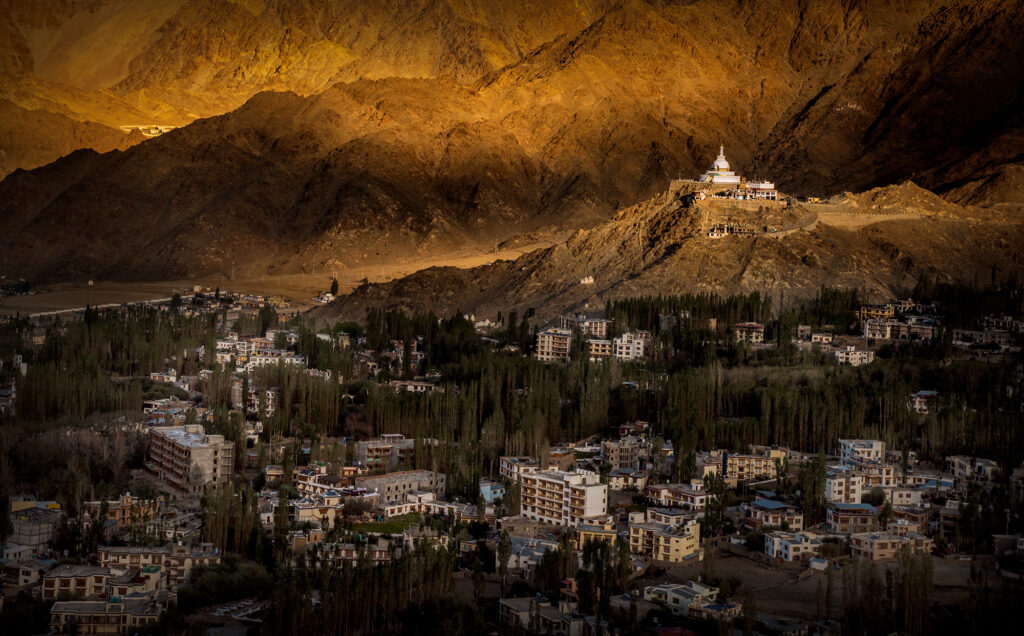
When The Day Dawns at Shanti Stupa
Shanti Stupa And Namgyoal Monastery
Generally, it’s advised to spend the first few days getting acclimatised to this city. But one can hardly resist himself to grab the image of the enigmatic view of Shanti Stupa getting merged into the cityscape with the night city lights during the sun down observing it from Namgyal Monastery. Or seeing the play of lights and shadows on Namgyal Monastery from Shanti Stupa with the final daylight where stark shadows overpower the bright daylight-lit monastery challenging a photographer to succeed in a blink-and-miss game of shutter clicks.
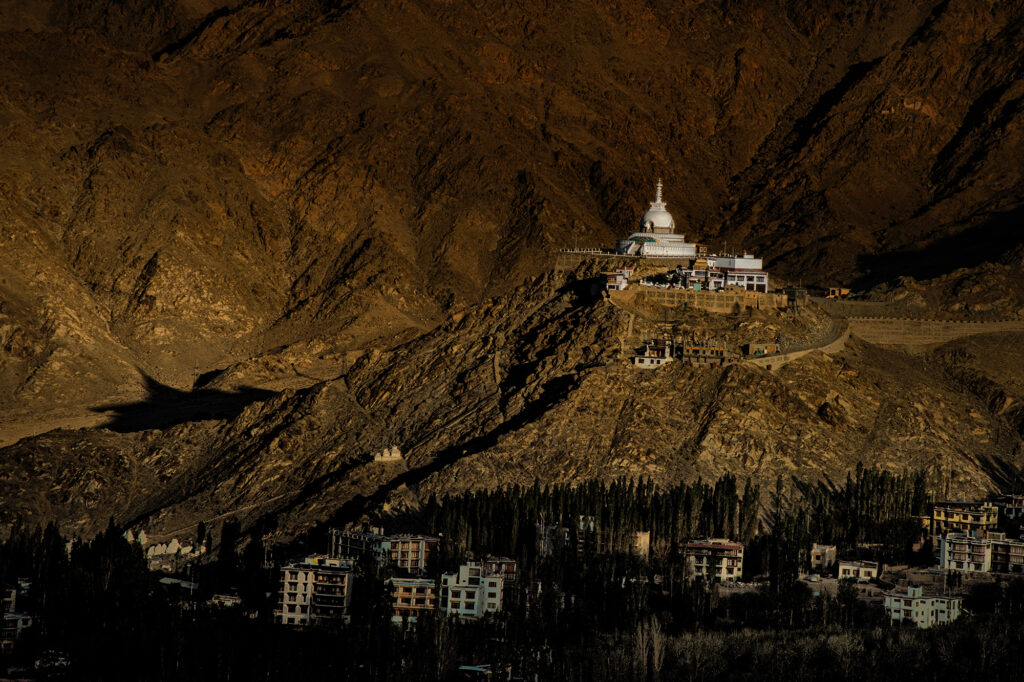
Shanti Stupa as Seen From Namgyal Monastery
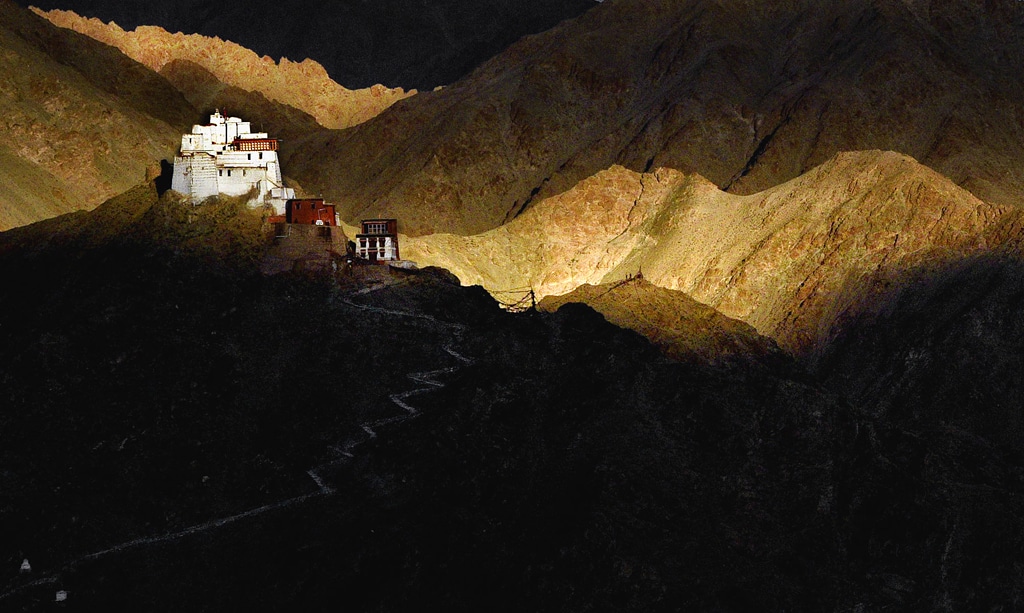
Namgyal Monastery Shot from Shanti Stupa
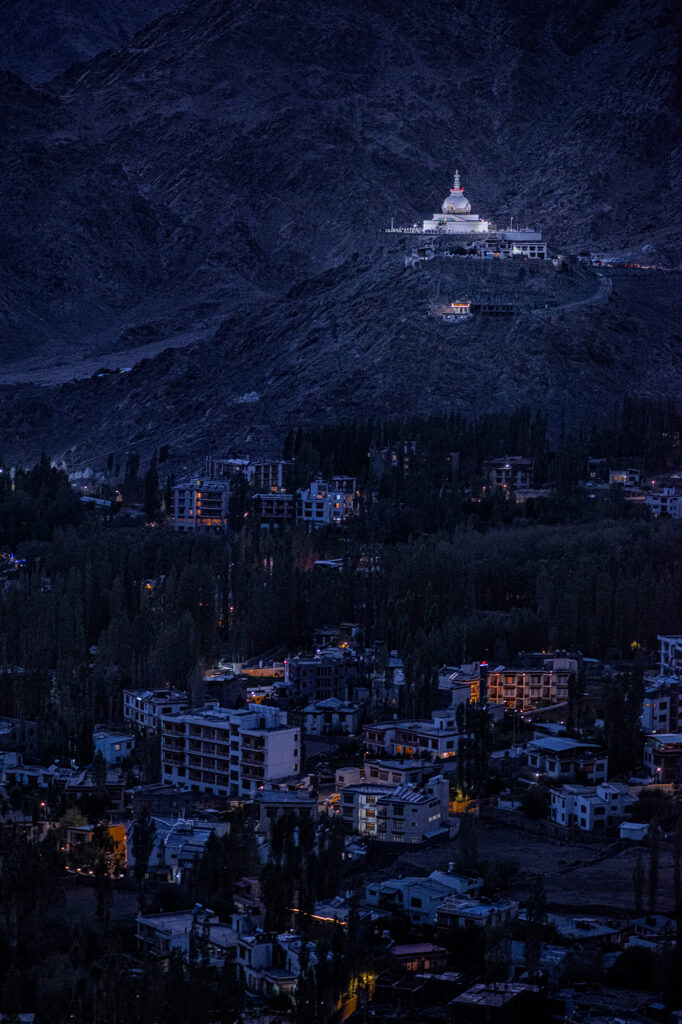
Shanti Stupa During Blue Hours
Nubra Valley
Another stunning natural feature of Ladakh is Nubra Valley, a high-altitude desert valley that offers stunning views of sand dunes, Buddhist monasteries, and the snow-capped Himalayan mountain range. The combination of the route through snowcapped Khardungla, the larger than life-size statue of Maitreyee Buddha, Diskit Monastery, the cold desert of Hunder, the double-hunched Mongolian yack everything fascinates the clickers to the extreme to quench their photographic thirst.
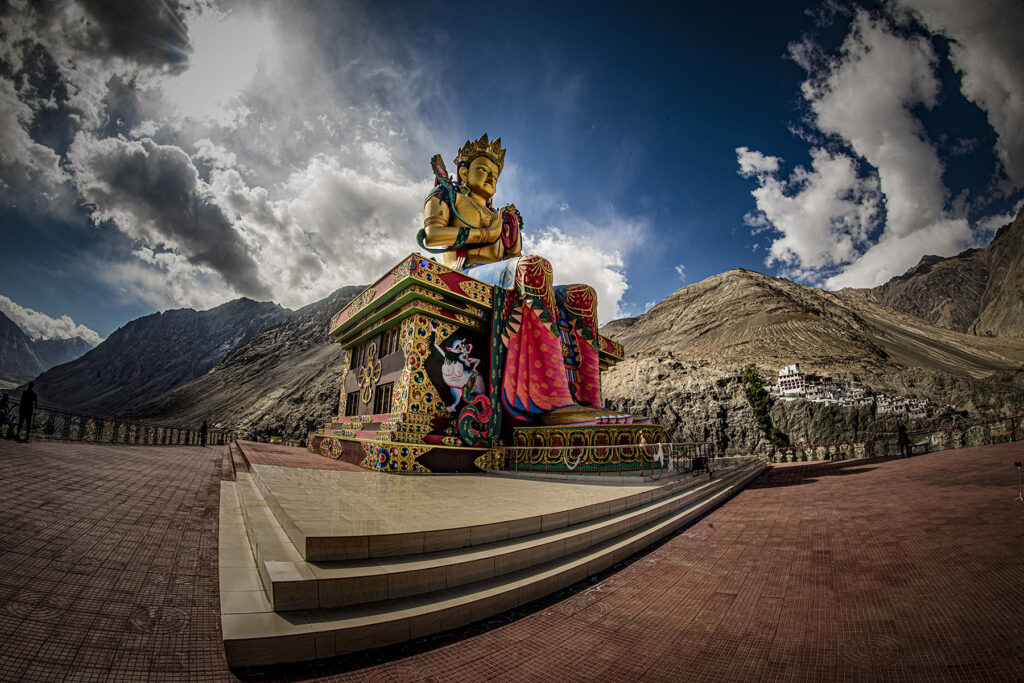
Maitreyee Buddha at Diskit Monastery
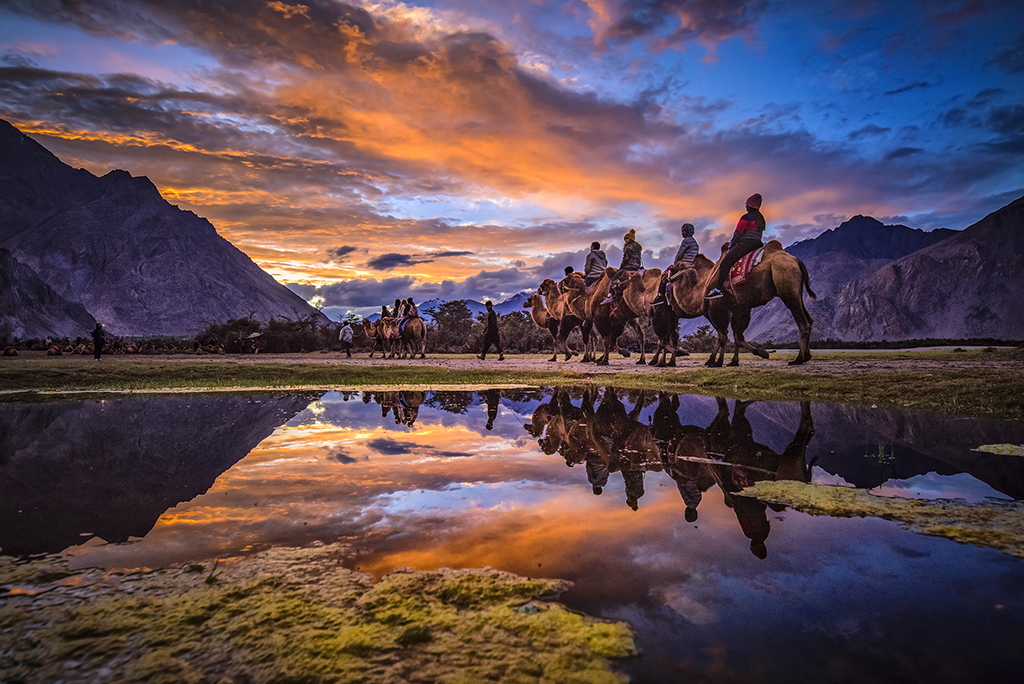
The Double Hunch Bactrian Camel of Hunder, Nubra
Turtuk, The Baltik Village
Turtuk is a small village located in the Nubra Valley region of Ladakh. It is a magical destination that offers a unique blend of natural beauty and cultural heritage. It’s a great place to experience the rich cultural traditions of the Balti people, who have their own unique culture and traditions. It is a charming little village with narrow winding lanes, traditional houses and beautiful gardens of apple and apricot. The beauty of the women and children here are second to none, a great place for portrait photography for sure.
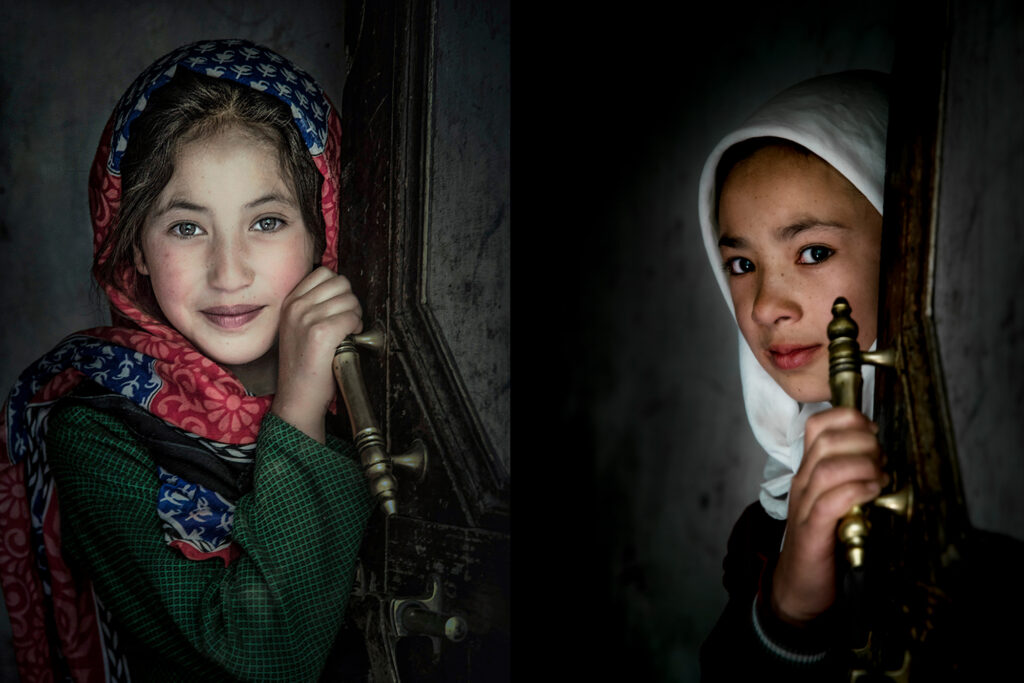
The Beautiful Girls of Turtuk
Pangong Tso
The beautiful Pangong Tso(Lake) is a must-visit destination for anyone traveling to Ladakh. Its stunning natural beauty, unique landscapes, and rich wildlife make it a truly magical place. The lake is known for its ever-changing colours, which range from shades of blue and green to violet and purple, depending on the time of day and weather conditions. The crystal-clear waters of the lake reflect the surrounding mountains and sky, creating a stunning mirror-like effect in such a dramatic way that an avid photographer even sometimes forgets to click his shutter. The lake is also surrounded by rugged mountains, with snow-capped peaks and rocky outcroppings adding to its dramatic beauty. The lake is an important breeding ground for several species of birds, including the bar-headed goose, Brahminy duck, and brown-headed gull. Marmots are a common sight in the Pangong Tso area. These furry creatures are a type of ground squirrel that is native to high-altitude regions of Asia, Europe, and North America. In Pangong Tso, the Himalayan marmot is the most commonly seen species. The clear night skies above Pangong Tso are perfect for astrophotography.
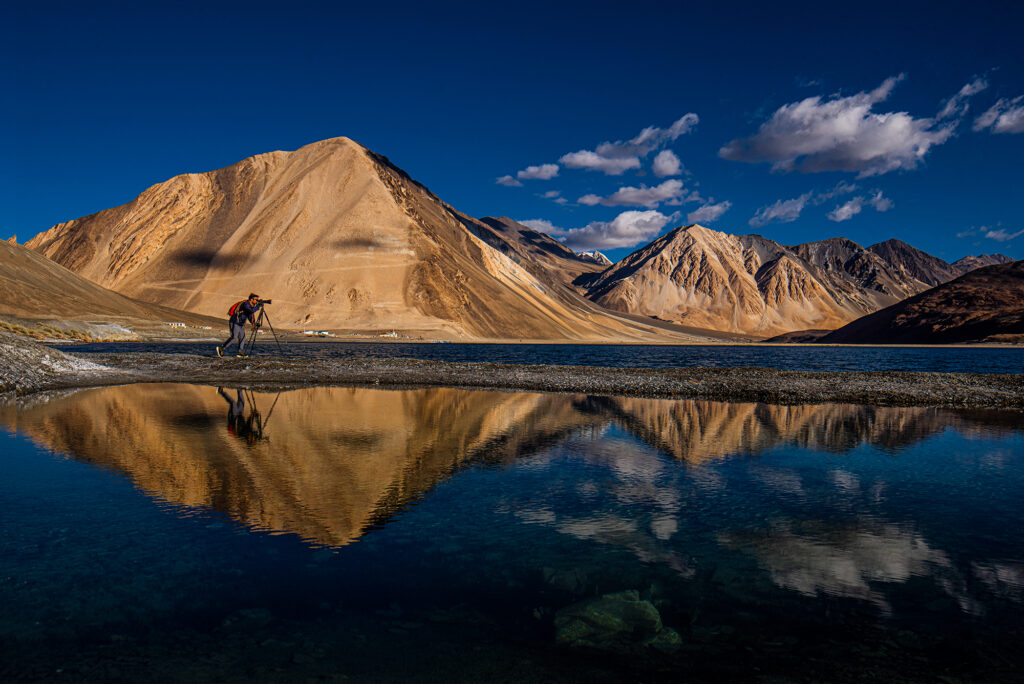
Mirror Reflection on Pangong Lake
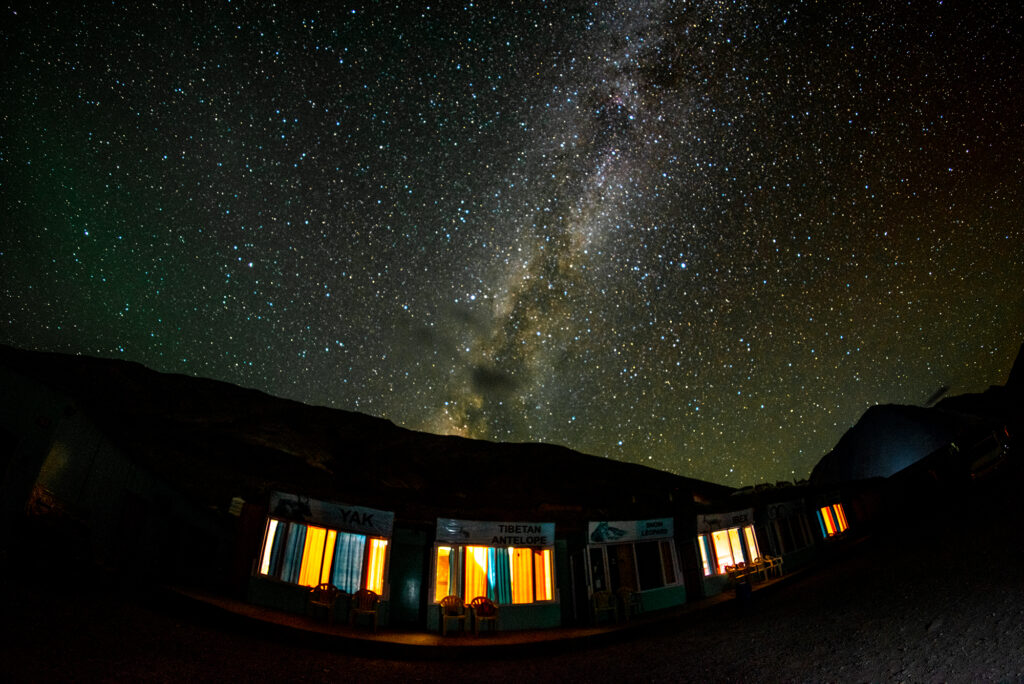
Milkyway Over Pangong Lake Sky
Aryans’ Village
Aryan villages are a must-see destination that showcases the traditional Ladakhi way of life and provides ample photographic opportunities for both novice and professional photographers alike. The villages comprise of mainly four small villages, Dah, Hanu, Bhima, and Garkone. These villages are known for their terraced farms, scenic trails, and ancient structures that have stood for centuries. The tribe of this region is believed to be the original descent of the “Pure Aryan Race”, known as the “Brokpas” or “Dard” who are believed to be part of the Alexander army, who came about
2000 years ago. The word ‘Dard’ comes from a Sanskrit word that means people who live on the hillside. The opportunity to shoot these local Aryans in their traditional attire and at their own environment opens up a huge potential for portraits, people, travel, and documentary photography.
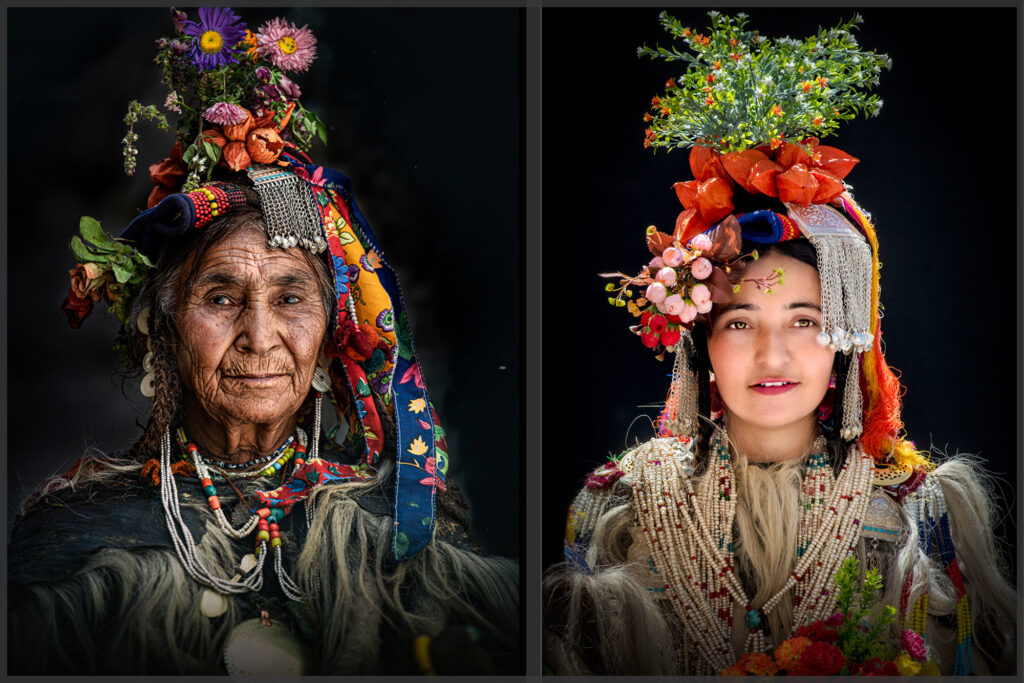
The Aryan Village Native Brokpa community Ladies in Their Traditional Attire
Tso MoRiri
Tso Moriri is a high-altitude lake fed by the snow melt of the surrounding mountains and is known for its crystal clear waters and stunning scenic beauty.
It is a popular destination for photo lovers and offers to witness a unique experience of natural beauty, clear sky with Milkyway and the cultural significance of the local nomadic tribe Changpa. The clear ripple-less reflection of the azure blue sky merged into the ragged hills and the vast lake makes the place resemble a paradise to any and every photographer.
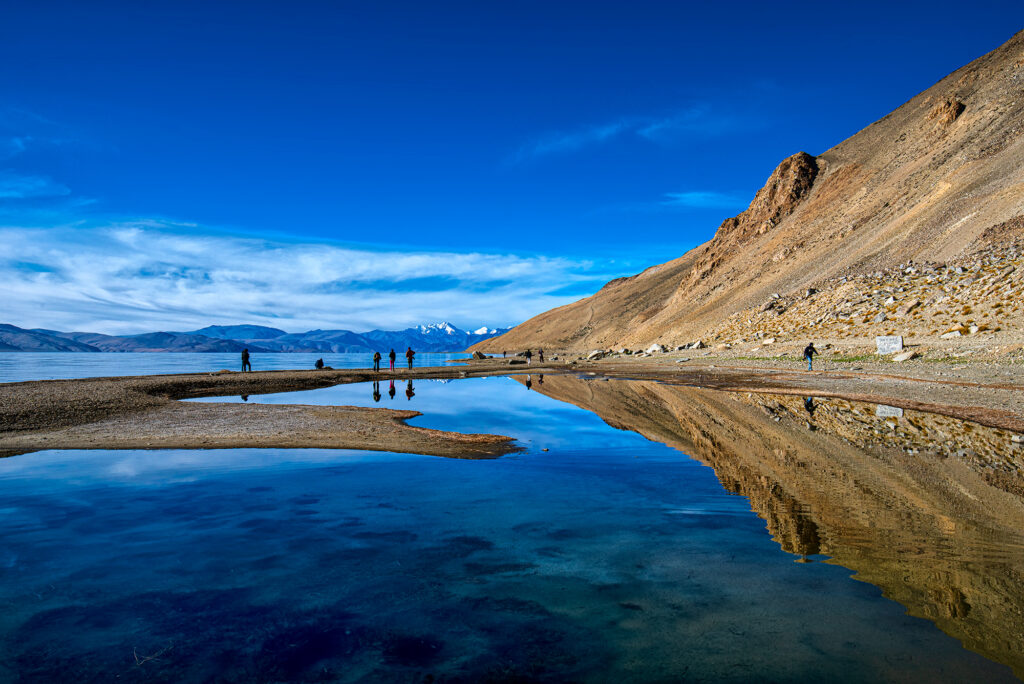
The Grandeur of Tso Mo Riri Lake
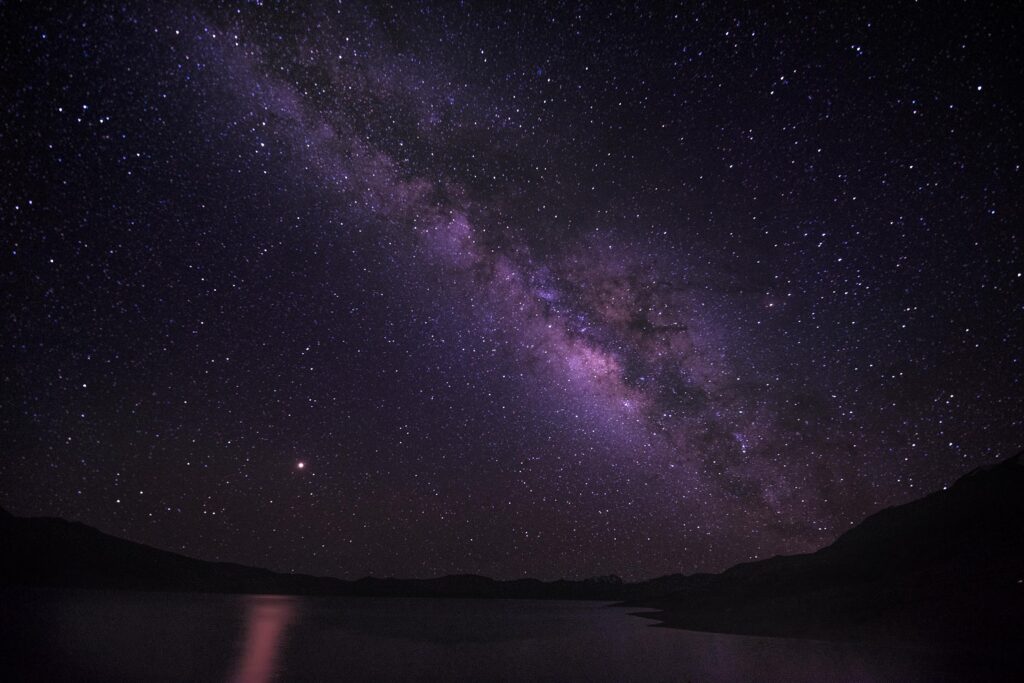
Milkyway over Lake Tso Mo Riri
Monasteries
The ancient Buddhist monasteries of Ladakh are a testament to the rich cultural heritage of the region. These monasteries, also known as gompas, offer a glimpse into the spiritual and cultural traditions of the Tibetan-Buddhist people who have inhabited Ladakh for centuries. The monasteries, notably Hemis, Thikshe, Shey, Stakna, Spituk, Lamayuru, Takthok, Mhato, etc built either on the bank of the river Indus or on the lap of the hills, provide a stunning view for the landscape lovers. Inside, the daily activities and the prayers by the lamas are genuine treats for the eyes and souls. These monasteries also conduct vibrant and eventful festivals every year where they showcase cultural and religious dances and activities from different parts of Ladakh. Overall, the ancient Buddhist monasteries of Ladakh are not only beautiful architectural wonders but also cultural treasures that reflect the spiritual and cultural traditions of the region. Their stunning artwork, peaceful atmosphere, and unique cultural experiences make them a must-visit destination for every photographer as they offer a wide range of photo opportunities like architecture, landscape, culture, travel, people, portrait, and festivals.
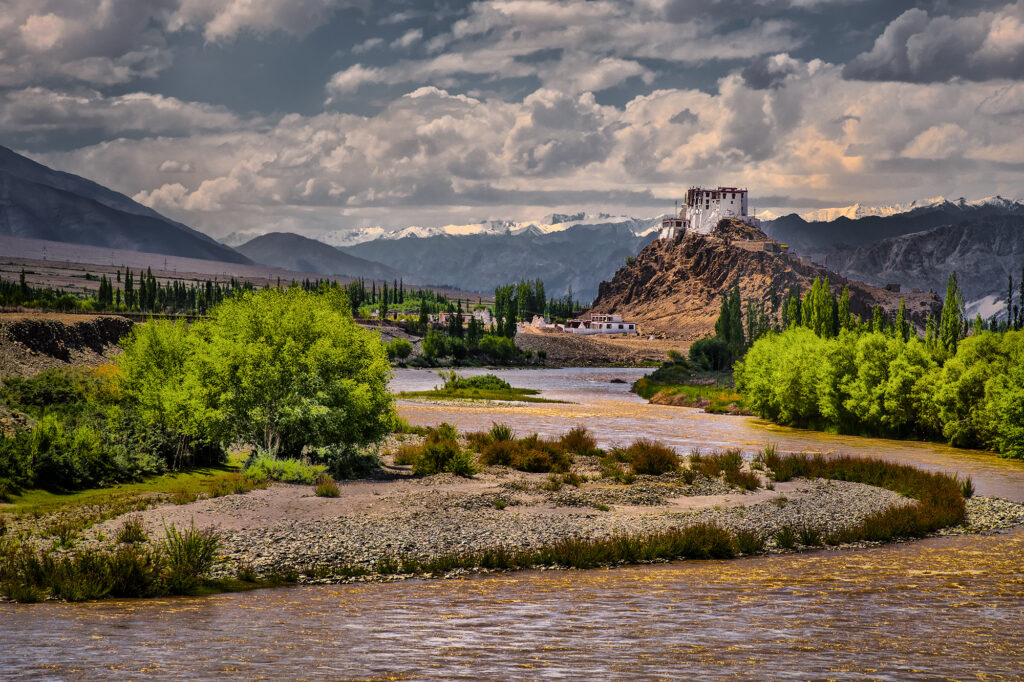
Majestic Stakna Monastery with the River Indus
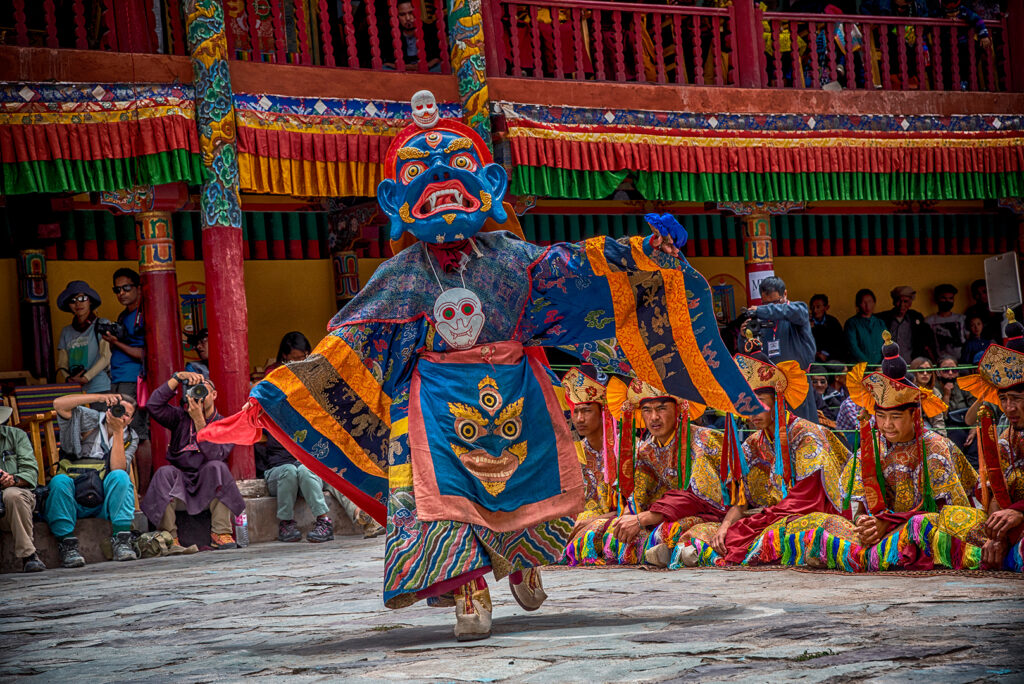
The Vibrant Hemis Festival
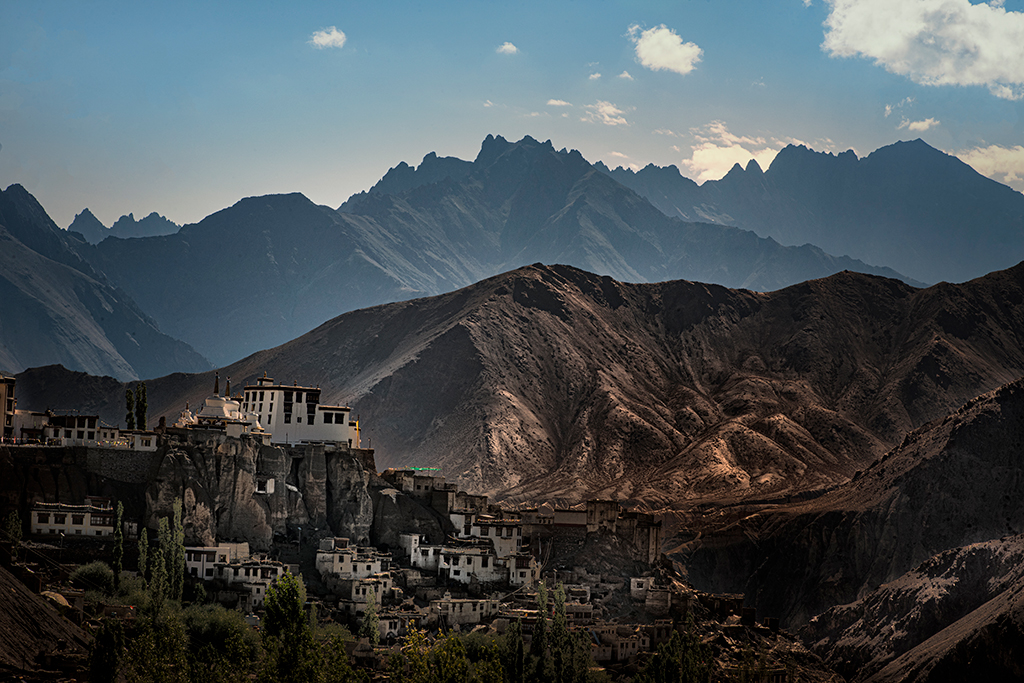
Lamayuru Monastery…Seen from a Top Vantage Point
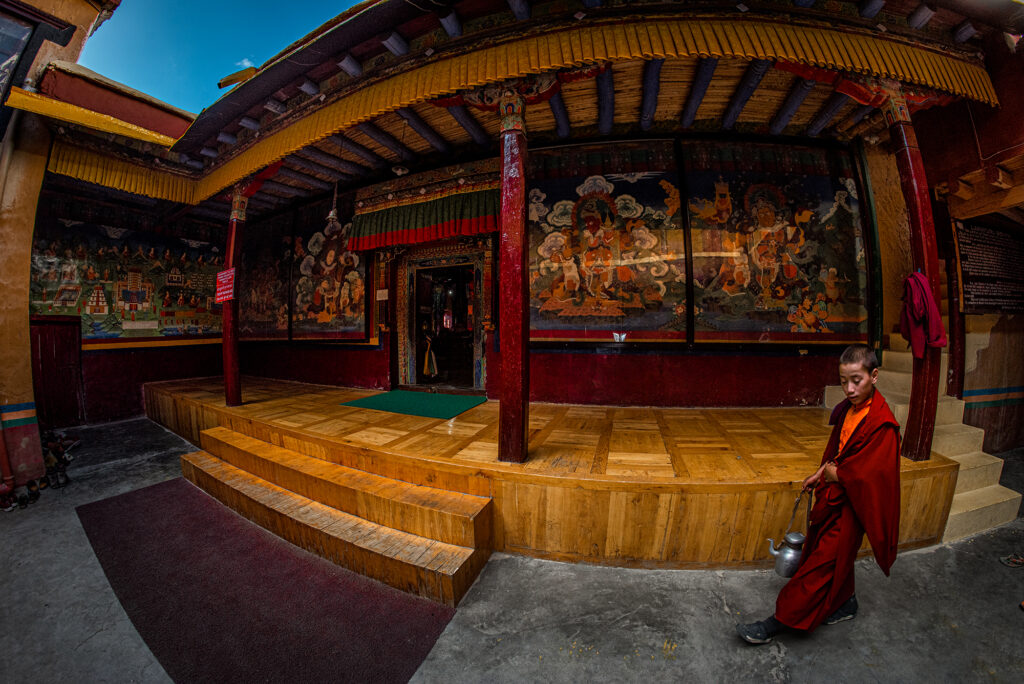
Little Monk Inside the Lamayuru Monastery During Morning Prayer Activities
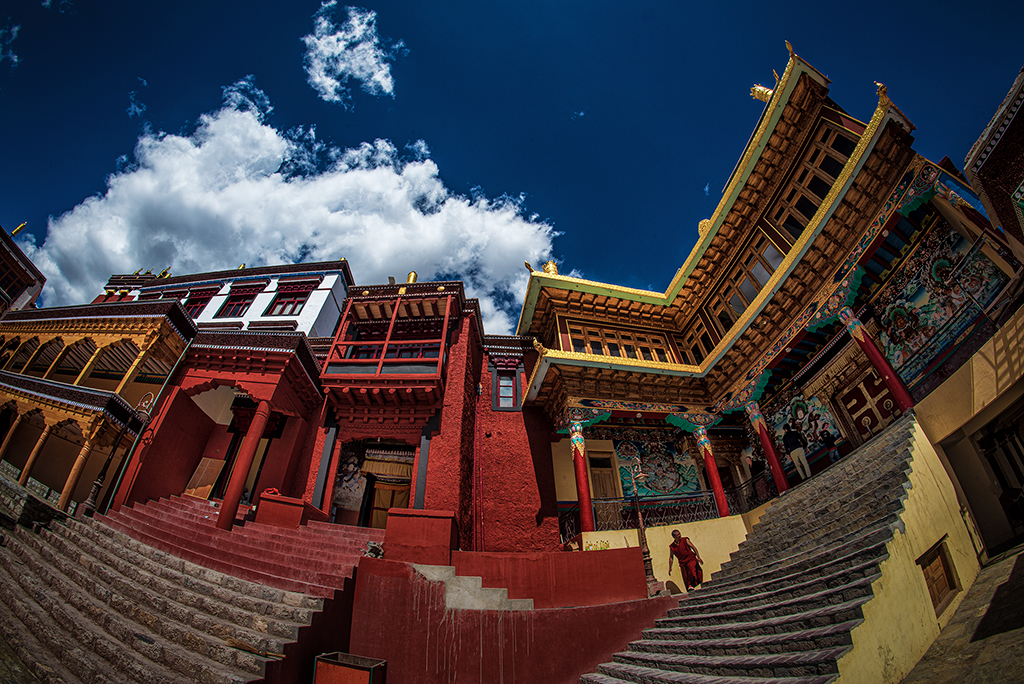
The Great Architecture of Mhato Monastery
Though this is just a highlight of Ladakh from a photographer’s viewpoint, there is much more to see and know about Ladakh. Such as the places like Lamayuru, the confluence of Indus and Zanskar, Tso Kar, Thikshe, and many more. If you want to see and know more about Ladakh, Join me this summer and freeze the enchanting beauty of Ladakh in your camera. An 8 to 10 days trip is perfect for someone to cover Ladakh extensively. Click here for more details!


